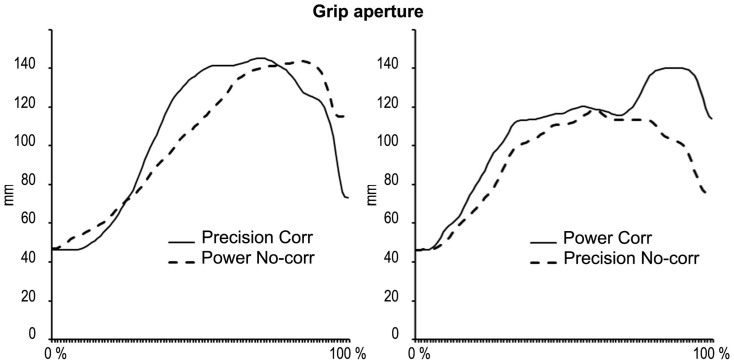Figure 2. The graph illustrates the shape of grip aperture stereotypical patterns (taken from single tracks of one participant) and shows that in the JA condition correction trials (THICK LINES) showed a similar shape compared to no-correction (DASHED LINES) trials until the closure phase, and then they diverged, thus highlighting that participants on-line adapted to the avatar's movement.
Grip aperture data have been normalized on movement time so that the abscissa reports percentages of movement. On the left panel, the kinematic profile of grip aperture in corrections from power to precision grip (THICK LINE): it shows that the participant firstly opened the hand as to perform a power grip during the opening phase, e.g. their grip aperture was similar to a power grip (see DASHED LINE in this panel), and then reduced the aperture so as to match the kinematics of a precision grip during the closure phase (i.e. the final grip aperture is equal to the one of a precision grip, see dashed line in the right panel). Conversely, on the right panel, the figure illustrates grip aperture data in corrections from precision to power grip (THICK LINE): it shows that participants firstly opened their hand as to perform a precision grip, e.g. their grip aperture was similar to a precision grip (see DASHED LINE in this panel), and they then corrected their movement until it matched the aperture of the power grip (i.e. the final grip aperture is equal to the one of a power grip, see dashed line in the left panel).

